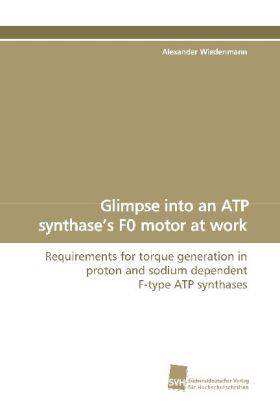
- Afhalen na 1 uur in een winkel met voorraad
- Gratis thuislevering in België vanaf € 30
- Ruim aanbod met 7 miljoen producten
- Afhalen na 1 uur in een winkel met voorraad
- Gratis thuislevering in België vanaf € 30
- Ruim aanbod met 7 miljoen producten
Zoeken
€ 68,95
+ 137 punten
Omschrijving
The majority of ATP, the carrier of energy in the living world, is generated by the ATP synthase. The enzyme complex converts energy from the transmembrane electrochemical gradient into rotation by an H+ or Na+ current through the F0 part. The rotation is transmitted to the F1 part, where ATP is formed from ADP and Pi. The present thesis aimed to elucidate the requirements for torque generation during ATP synthesis in the holoenzyme as well as in the isolated F0 part. To achieve this, a quantitative H+ transport assay was established. Furthermore, the Na+-dependent enzyme from P. modestum and the H+- dependent ATP synthase from E. coli were compared with respect to torque generation and ATP synthesis. We observed that a small ion concentration gradient was indispensable for ATP synthesis in both enzymes. Much more surprising was the observation that 100 times higher Na+ or H+ concentrations were required for synthesis than hydrolysis of ATP. For the first time the ion concentration at the periplasmic side was recognized as critical determinant for ATP synthesis. Based on these data an model the F-type ATPases is presented.
Specificaties
Betrokkenen
- Auteur(s):
- Uitgeverij:
Inhoud
- Aantal bladzijden:
- 144
- Taal:
- Duits
Eigenschappen
- Productcode (EAN):
- 9783838106595
- Verschijningsdatum:
- 3/06/2009
- Uitvoering:
- Paperback
- Formaat:
- Trade paperback (VS)
- Afmetingen:
- 152 mm x 229 mm
- Gewicht:
- 199 g

Alleen bij Standaard Boekhandel
+ 137 punten op je klantenkaart van Standaard Boekhandel
Beoordelingen
We publiceren alleen reviews die voldoen aan de voorwaarden voor reviews. Bekijk onze voorwaarden voor reviews.











